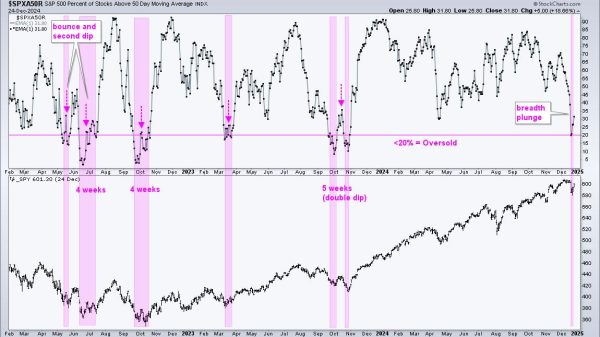Romina Boccia and Ivane Nachkebia
How does Social Security compare to other countries’ retirement programs? It’s an interesting question that prompted me to organize a symposium with international experts at the Cato Institute earlier this year. In a recent Washington Post article, Julie Zauzmer Weil asks a similar question but misses the mark on several fronts.
Weil provides a compelling analysis of Social Security, emphasizing the program’s below-average replacement rate compared to other Organisation for Economic Co-operation and Development (OECD) countries. While the article raises valid concerns, it overlooks several points that paint a more nuanced picture of the US retirement system—most importantly, how much less dependent Americans are on government for their retirement income.
The article fails to acknowledge the total replacement rate of the US retirement system, which includes both Social Security and voluntary pensions. When considering this broader perspective, the US approach replaces more than 73 percent of pre-retirement earnings for average workers, significantly higher than the OECD average of 55.3 percent. This places the United States ahead of many countries, including some with more robust government-run systems.
For example, the article shows that French public pensions replace 57.6 percent of pre-retirement earnings of an average worker, compared to Social Security’s 39.1 percent replacement rate. (As mentioned, when voluntary pensions are included, the total replacement rate for the US retirement system exceeds 73 percent.) On the other hand, the French system remains at 57.6 percent due to the limited coverage of voluntary pensions, so low that the OECD does not factor them into total replacement rate calculations. OECD data also highlight that American seniors are far less dependent on government for their retirement income compared to their French counterparts. Public benefits make up 39.3 percent of American seniors’ total income, while in France, they account for 78.1 percent.
The higher income replacement rate in the United States is largely due to the strength of voluntary pension plans like 401(k)s and IRAs, which play a key role in supplementing Social Security benefits. The program was never intended to be most workers’ sole source of income in retirement but rather a backstop to keeping seniors out of poverty.
Importantly, income from private savings and investments is income that Americans fully own, whereas beneficiaries have no property rights to their Social Security benefits. Congress can change benefit policies at any time. (See my recent piece “Five Reasons Why Social Security Is an Income Transfer Program, Not an ‘Earned Benefit.’”)
Weil acknowledges that Americans rely more heavily on private pensions and savings, and she argues that not all workers have access to these savings, making across-the-board benefit cuts undesirable. However, this argument misses a critical point. Proponents of Social Security reform, including myself, do not advocate for across-the-board cuts. Instead, we support a more nuanced approach: focusing government benefits on low earners who are less likely to have significant private savings and reducing benefits for high earners who typically have substantial 401(k) assets and other retirement savings. This targeted approach would better align Social Security with its original goal of providing a safety net for those most in need.
A good example of a more targeted system that the United States should consider emulating is New Zealand’s Superannuation (NZS) program. New Zealand’s government-provided retirement benefits focus on eliminating poverty among the elderly, ensuring that all eligible retirees have a basic level of income security. To complement the government benefit, New Zealand offers the KiwiSaver program, which provides some incentives and makes it easy for people to save for their retirement in accounts they own and control. This targeted approach could serve as a model for the United States as we consider reforms to our Social Security system.
Additionally, while Weil acknowledges that poorer workers often lack access to 401(k)s and IRAs, this overstates the problem. It also fails to explore potential solutions. First, lacking access to 401(k)s or IRAs does not mean that Americans aren’t saving for retirement. According to the Federal Reserve, 88 percent of Americans who are 60 and older have retirement savings, when you include a broader set of income sources such as business and rental income and savings in other accounts. Second, one promising idea is the establishment of universal savings accounts (USAs). Unlike current retirement savings vehicles, USAs would be accessible to all workers and would lack the complex rules that often deter low-income workers from participating in 401(k)s and IRAs. Being able to access account funds without paying a hefty tax penalty is particularly important to younger and lower wage workers who may need to tap into their savings earlier, whether to cover an emergency or invest in their future through education or by building a business. By creating a more inclusive and flexible savings system, policymakers can help bridge the gap for those who are currently underserved by both Social Security and private employer–provided pensions.
In summary, while the Washington Post article sheds light on key aspects of the US retirement system, it overlooks the strengths of our voluntary retirement savings system, fails to acknowledge how targeted reforms could better protect vulnerable seniors, and misses an opportunity to explore innovative solutions like USAs, which would address the specific needs of low-income workers.
A more targeted approach to Social Security reform, one that focuses government benefits on those who need them most and scales back benefits for those with higher earnings—who have the ability to save for more of their retirement needs in ways they own and control—would better serve the diverse needs of American retirees while protecting younger workers from higher taxes and all Social Security beneficiaries from automatic benefit cuts.
We can learn a lot from how other countries manage their retirement programs, including how policymakers have addressed similar demographic and economic changes that the United States faces. As Jason Fichtner, one of the experts at our Cato Social Security Symposium, stated, “We need to think about this holistically as a retirement ecosystem and where income is coming from.” He’s right. We should avoid missing the retirement income forest by focusing primarily on the government benefit trees.
Following the May 2024 Cato Institute Social Security Symposium: A Global Perspective, we’re now working on a book that will compare the five featured countries (the United States, Canada, Germany, New Zealand, and Sweden) across several dimensions and will share insights and perspectives from the symposium in a forthcoming volume to be published next year. In the meantime, you can watch video from the symposium.
























